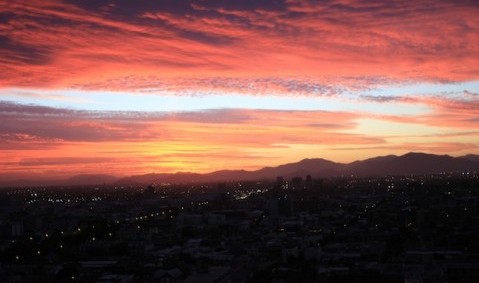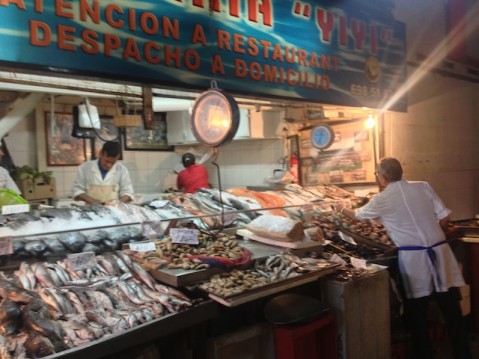Santiago kind of felt like a vacation from our trip. It’s a big, modern city which, once we adjusted from the culture shock we felt arriving from Bolivia, felt a lot like home. We immediately noticed the vast economic difference from the first three countries we visited. Systems and infrastructure are modern and the orderliness of it all kind of took us aback—as did the costs.
Outside of the airport we got adjusted pretty quickly. The metro system is a lot like the one in Washington DC (but on schedule), and the clean, wide sidewalks bustle with university and professional commuters. For the first time in months we didn’t feel like we stood out from the locals. There is little to no indigenous presence in the areas we visited. Sadly, we later learned that the city was intentionally socioeconomically segregated decades ago, and we only witnessed bits of these more impoverished areas on our way to the airport leaving town.
We rented an apartment through AirBnB and finally having a place of our own was great. We were able to do some shopping at Mercado Central—an old-style fish market with fresh produce and cheese stalls—and cooked a couple of meals at home for the first time since Ecuador. Other than taking a break from the potato diet, our first order of business was to get Eric’s knees looked at. We visited Clinica Alemana, the fancy shmancy private hospital which our travel insurance will allegedly reimburse. Doctor’s orders: rest, stretch, and painkillers.
We heeded the medical advice, and basically lounged around and enjoyed the city. We may have taken the lounging a little too seriously because it turns out we have very few photos of Santiago. Take our word for it: it’s beautiful, with views of the Andes on clear days (when the smog lifts) and perfect weather all the time. Aside from the scenery, pretty much everyone is gorgeous and friendly, there’s great wine everywhere, a politically active student population, an abundance of art, and a really navigable layout for out-of-towners.
Highlights included:
Lastarria – A “neighborhood” (block) full of Parisian-style open-air restaurants and cafes, where we ate a couple great meals and met some really nice people.
Providencia – The place to be in Santiago, this ever-expanding neighborhood has some of the best bars and restaurants, lots of universities and the boutiques and outdoor lounging spots that usually accompany them. We stayed here with a friend of a friend, who was working on launching travel site destinalo.com. Catalina was a great host who helped us figure out some more of our plans.
Patio Bellavista – The restaurant tourist hub, this indoor-outdoor maze of eateries had just about every type of food, live music, a crowd of all ages, and basically the Guerilla Café of Chile. The walls and menus were full of political activists and icons such as Victor Jarra, Salvador Allende, Che Guevarra, and a pita sandwich named the Frida Kahlo.
Museo de la Memoria – A free museum dedicated to raising awareness of global human rights violations, the focus is the atrocities of the Pinochet dictatorship and the military coup of September 11, 1973. The newish museum included moving exhibits about the many who were tortured, killed or disappeared during that time. While heavy it was important for us to take the time to visit.
We really felt at home in Santiago and even had some lofty conversations about living here some day… or at least visiting. We will need to work on our Spanish though because Chileans admittedly speak REALLY fast.
Here’s where we were:
(Santiago, Chile)


